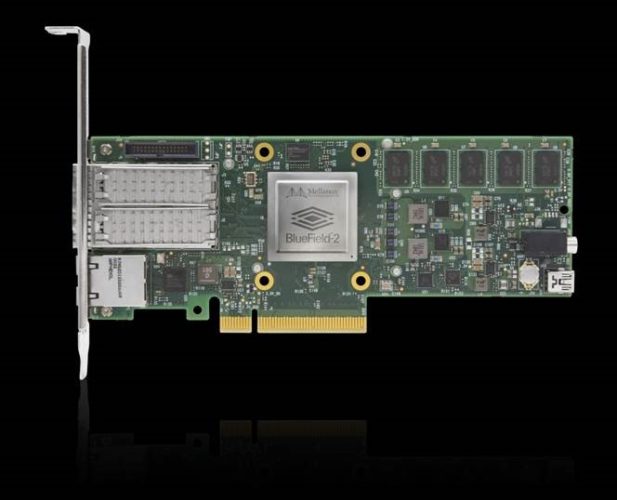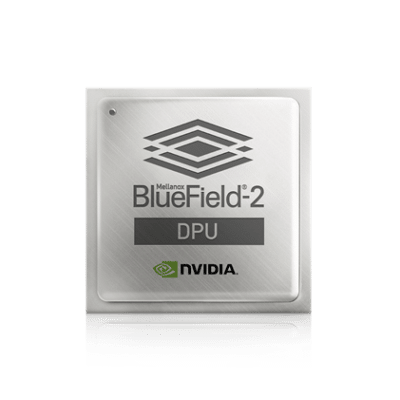What is DPU? What is the difference from CPU and GPU?
Of course, you are already familiar with the CPU (Central Processing Unit). Flexible and responsive, for years CPUs were the only programmable component in most computer systems.
Later, the GPU (Graphic Processing Unit), appeared and gradually took an important role in some specific computer applications. Originally used to provide powerful graphics and in real time, parallel processing makes them ideal for most accelerated computing tasks.
That makes them the key to opening the door for artificial intelligence, deep learning and big data analytics applications.
In the past decade, however, computing has moved beyond the limits of PCs and servers - with CPUs and GPUs powering new super-scale data centers.

These data centers will be supported with a powerful new processor category. DPU, the Data Processing Unit, has become the third member of the accelerated data-focused computing model. These new processors will represent one of the three main pillars of computing in the future, NVIDIA CEO Jensen Huang said in a presentation earlier this month.
CPUs for general-purpose computing, GPUs for accelerated computing and DPU, which help move data around the data center, will perform data processing.
What is DPU?
So what makes DPU different?
DPU is a new programmable microprocessor class that combines three main elements. DPU is an on-chip system (SOC) that incorporates the following components:
Multi-core, high-performance, programmable software, often based on common ARM architecture, incorporates other SoC components.
The high-performance network interface is capable of efficiently analyzing, processing and transmitting data at the speed of the link, or the overall speed of the rest of the network, to the GPU and CPU.
A flexible and programmable acceleration engine that reduces the load and improves application performance for AI and Machine Learning, security, telecommunications and storage, and more.
All the capabilities of this DPU are critical to enabling the creation of a cloud-native, cloud-native system based on physical hardware, which will create the next generation of cloud computing. follow.
DPU: Be integrated into SmartNIC
DPU can be used as a standalone embedded processor, but it is often integrated into SmartNIC, the network interface controller used as a key component in next-generation servers.
Other devices that are misunderstood as DPU miss important elements of these three important capabilities, which is the basic answer to the question: What is DPU?

DPU can be used as a standalone embedded processor, but they are often integrated into SmartNIC, the network interface controller used as a key component in next-generation servers.
For example, some vendors who use proprietary processors do not benefit from the rich development and application infrastructure provided by the vast ARM CPU ecosystem.
Some vendors claim they have DPU, but make the mistake of focusing on embedded CPUs to handle data paths.
DPU: A focus on data processing capability
It will be truly uncompetitive and difficult to expand if trying to beat traditional x86 CPUs by attacking on performance, it will be a loss. If processing 100 Gigabit / sec packets is a weakness of x86, why would embedded CPUs perform better?
The network interface needs to be robust and flexible enough to handle all network data path processing needs. Embedded CPUs should be used to initialize the control path and handle exceptions. Also nothing else other.
At a minimum, 10 capabilities that network data path acceleration tools can provide:
Analyze data packets, match and intervene to perform an open virtual switch (OVS)
Accelerated RDMA data transfer for Zero Touch RoCE
GPU-Direct accelerator to bypass the CPU and provide data directly connected to the GPU (both from the storage system and from other GPUs)
TCP acceleration including RSS, LRO, checksum, etc.
Network virtualization for offloading VXLAN and Geneve and VTEP
Accelerate traffic packets to allow streaming of media, CDNs and new 4K / 8K video streams over IP (RiverMax for ST 2110)
Accurate timming accelerator for telco Cloud RAN, such as 5T to provide 5G capabilities
Crypto acceleration for IPSEC and TLS is done inline so all other acceleration still works normally
Virtualization support for SR-IOV, VirtIO and para-virtualization
Secure Isolation: root of trust, secure boot, secure firmware upgrades, authenticated containers and application life cycle management
Here are just 10 of the acceleration and hardware capabilities that are important to answer yes to the question: What is DPU?
So, what is DPU? And here is a DPU:

Many of the chips believed to be DPU only focus on providing one or two of these functions. A worst effort to reduce the datapath load in proprietary processors. While this is a good thing for creating prototypes, this is only a minor task, given the size, scope and width of the data center.
Operate and exploit advertising by iCOMM Vietnam Media and Technology Joint Stock Company.
Adress: 99 Nguyen Tat Thanh, To 2, Khu 6, Thi tran Tan Phu, Tan Phu, Dong Nai.
Email: [email protected] | Tel: (+84) 984654960
Editor in chief: Tran Nha Phuong
Company: Lucie Guillot (Nha Phuong Tran)




